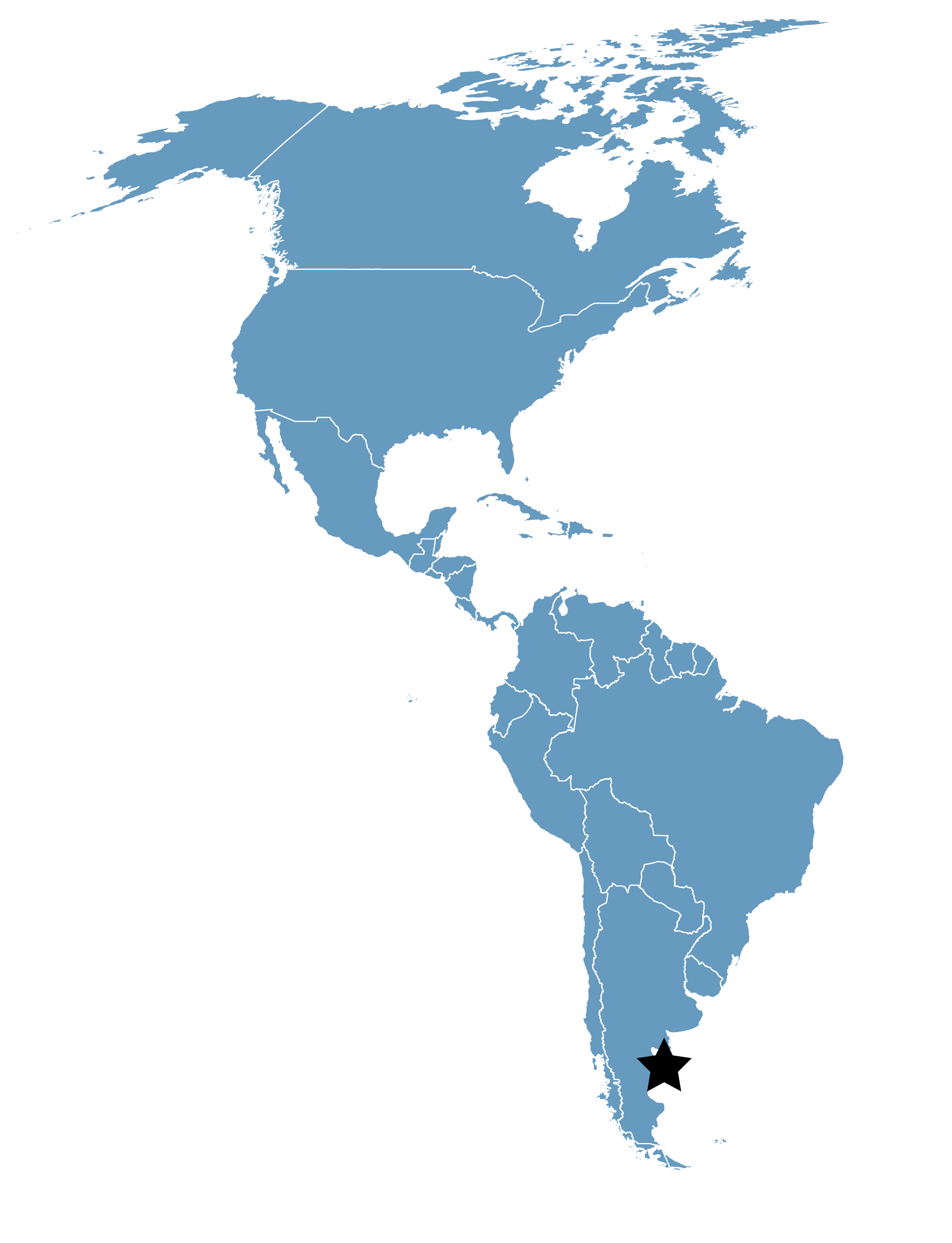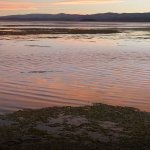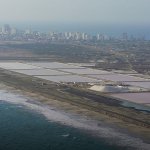Península Valdés
Location
Chubut, Argentina
Category
Regional
Basis for Designation
More than 1% of the population for Red Knot (Calidris canutus rufa).
Size
42,695 hectares (105,502 acres)
Date Designated
May 2012
Site Owner
Undersecretary of Tourism and Protected Areas of the Province of Chubut
Site Partners
National Patagonian Center (CENPAT-CONICET)
Overview
The Valdes Peninsula is located in the Province of Chubut on the central coast of Argentina and consists of numerous shallow bays with extensive intertidal mudflats, shallow lagoons, sandy beaches, and coastal dunes, plus sea cliffs and small islands. The site supports more than 1% of the population of rufa Red Knots (Calidris canutus rufa) as well as significant populations of Two-banded Plover (Charadrius falklandicus), Baird’s Sandpiper (Calidris bairdii), and the durnfordi race of American Oystercatchers (Haempatopus palliatus durnfordi). For this, the area was designated a WHSRN Site of Regional Importance–the result of a coordinated partnership by the Laboratory of Wetland-dependent Shorebirds based at the National Patagonian Center (CENPAT by its Spanish acronym) and the Undersecretary of Tourism and Protected Areas for the Province of Chubut.
The site supports more than 1% of the population of rufa Red Knots.
The Valdes Peninsula was the 6th WHSRN site designated in Argentina. It is within the Peninsula Valdes Natural Protected Area, which was named a Natural Heritage Site by UNESCO in 1999.
The majority of the site is home to privately owned rural establishments. However, being within the natural protected area, management and administration is carried out by the Province of Chubut’s Department of Protected Areas Conservation, overseen by the Undersecretary of Tourism and Protected Areas. The landowner letter of support required by WHSRN was therefore signed by the Undersecretary, the partner having the maximum provincial authority for the site.
The subsistence or small-scale fishermen that make up the community in and around the site have been informed about the shorebirds in the wetlands. They work together with different research teams at CENPAT-CONICET, and some are also part of an association called the Subsistence Fishermen Community Network for Sustainable Development (RECOPADE by its Spanish acronym).
Ecological System
Península Valdés is divided in two areas: the San José Gulf subsite and the Nuevo Gulf subsite. The first comprises a series of connected sandy beaches over the east and south coasts (Bengoa, Punta Conos, Fracasso, Larralde, Blancas, Iriarte, Isla de los Pájaros y Riacho San José beaches) separated by rocky coasts. Nuevo Gulf consists of one sandy beach (Colombo).
The coastal marine environment is characterized by extensive intertidal mudflats with medium-to-fine sand. The area’s wetlands are hydrologically dependent on the site’s semi-diurnal tidal regime, which has an average high of 6.14 meters and maximum of 8.95 meters at San José Gulf; 3.87 meters and 5.76 meters at Nuevo Gulf.
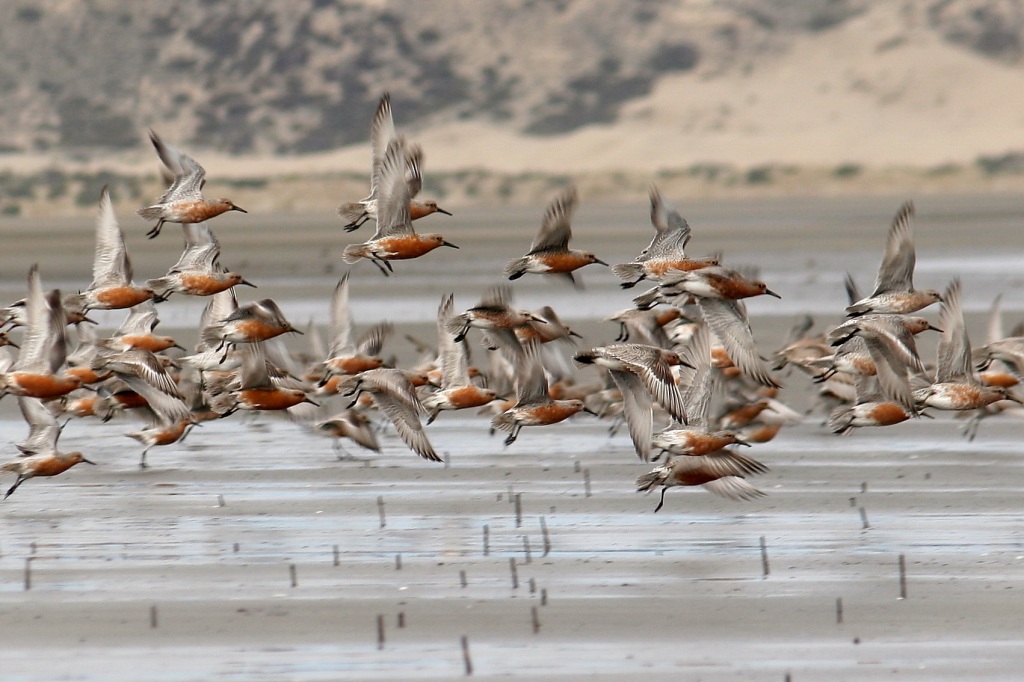
Red Knots (Calidris canutus rufa) flying at the WHSRN site Península Valdés. Photo: Dr. Luis Bala.
The rufa Red Knot
The Laboratory for Wetland-dependent Shorebirds (headquarted at CENPAT-CONICET in Puerto Madryn) has carried out shorebird surveys on the peninsula using scientific methodology since 1994, when it was established. Per the Laboratory’s records, the maximum point counts for rufa Red Knots have varied between 8,000 individuals in 1994 and 650 in 2008. Regardless of the fluxuation in densities from year to year, the peninsula’s coastal wetlands continue to sustain well over 1% of the subspecies’ total population.
The rufa Red Knot
Since 1994, the Laboratory has developed a variety of studies in the area that follow three basic lines of research:
- Population surveys and monitoring of shorebirds;
- Understanding the benthic invertebrate community (as a shorebird food source); and
- Development of ecological models.
Regarding bird banding, most efforts are focused on Charadrius falklandicus (Two-banded Plover) for studies about their reproduction. All research at the Lab is developed to serve as a source of information that is then shared with the environmental community in the form of lectures, courses, workshops, and conferences, as well as through printed and electronic outreach material.
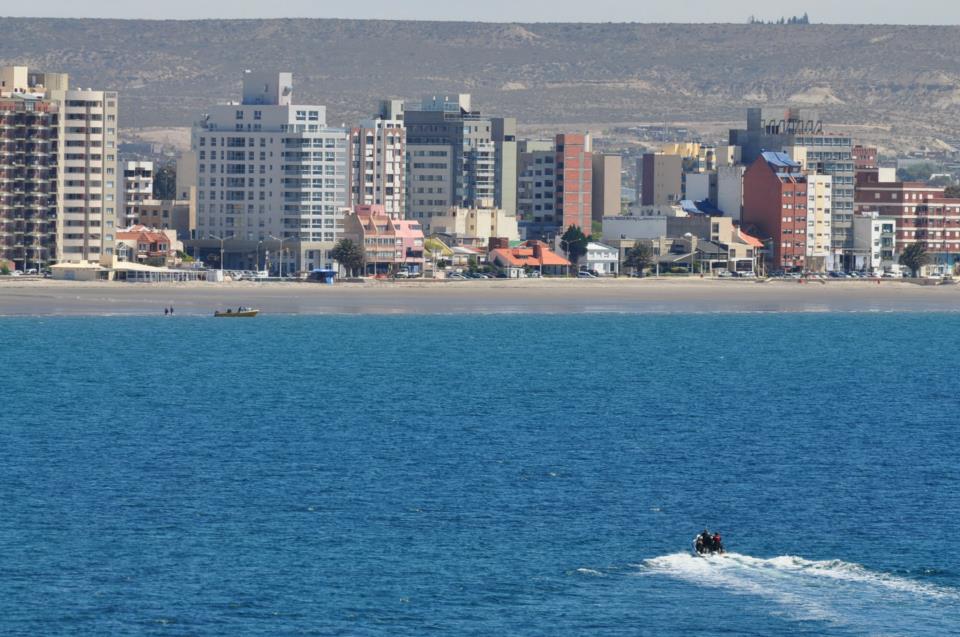
Puerto Madryn, Península Valdés, Argentina. Photo: Soledad Donoso.




